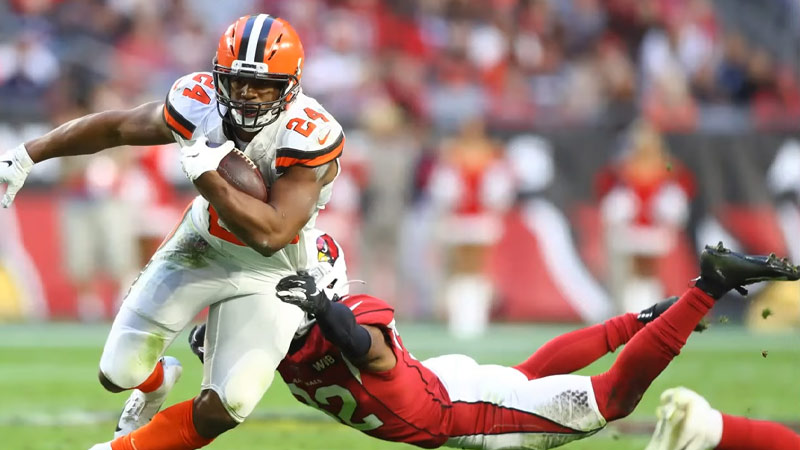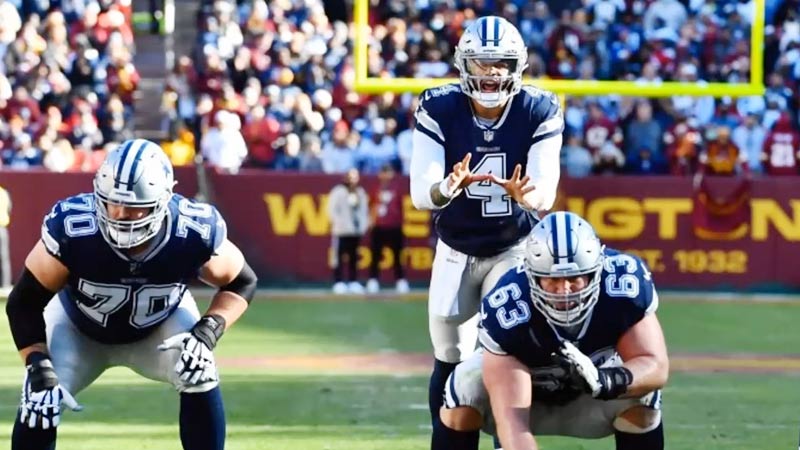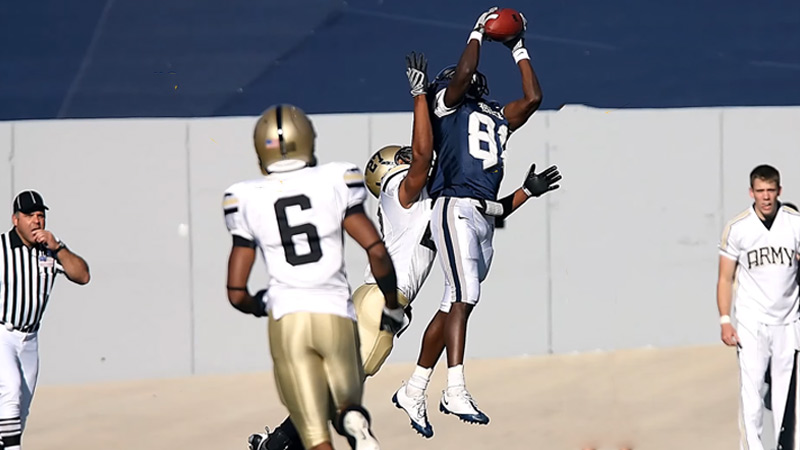In the dynamic world of American football, skilled positions form the backbone of both offensive and defensive strategies. These positions demand a unique set of talents and abilities that are integral to a team’s success on the field.
From quarterbacks orchestrating plays to wide receivers sprinting for the end zone, each skilled position plays a crucial role in the complex tapestry of the game.
This article delves into the intricacies of skilled positions, shedding light on their roles, responsibilities, and the impact they have on the gridiron. So, stay focused and read till the end of this article.
What Are Skilled Positions In Football?
Skilled positions in American football refer to key player roles that require specific athletic abilities, precision, and strategic thinking. These players typically handle offensive or defensive tasks with specialized skills.
On offense, skilled positions include the quarterback who directs the team’s plays, the wide receivers who catch passes, and the running backs who carry the ball.
On the defensive side, skilled positions encompass cornerbacks who cover receivers, safeties who defend against long passes, and linebackers who tackle runners and cover the middle field.
Kicker and punter roles also demand expertise in special teams. These skilled positions demand exceptional athleticism, agility, speed, and strategic acumen, contributing significantly to the team’s success in American football.
Different Types of Skilled Positions in Football

Here’s an expanded overview of the different types of skilled positions in American football:
Quarterbacks
Quarterbacks are often considered the most crucial players on the field. They are responsible for leading the offense, calling plays, and making split-second decisions.
Their role includes passing the ball to receivers, handing it off to running backs, and occasionally running with the ball themselves. Quarterbacks require strong throwing accuracy, decision-making under pressure, and the ability to read defenses.
Running Backs
Running backs are versatile players who primarily carry the ball and rush down the field. They can also catch passes from the quarterback, making them valuable assets in both running and passing plays.
Running backs need agility, speed, vision, and the ability to break through tackles to gain yardage.
Wide Receivers
Wide receivers are responsible for catching passes from the quarterback. They use their speed, agility, and route-running skills to get open and make receptions. Their ability to create separation from defenders and make crucial catches can greatly impact the team’s offensive success.
Tight Ends
Tight ends are hybrid players who possess the qualities of both offensive linemen and wide receivers. They can block to help the offensive line and also catch passes.
Tight ends are often used as intermediate targets in passing plays and can create mismatches against linebackers or safeties due to their size and athleticism.
Offensive Linemen
While not often categorized as “skilled” positions, offensive linemen play a critical role in protecting the quarterback and creating running lanes for the ball carriers.
They include positions like tackles, guards, and center. Their teamwork, blocking skills, and ability to read defensive schemes are essential for the success of the entire offense.
Each of these skilled positions contributes uniquely to the team’s offensive strategy, bringing a combination of athleticism, specialized skills, and strategic awareness to the game.
Strategies of the Players in Skilled Positions

Let’s delve into the strategies employed by players in skilled positions in American football:
Quarterbacks
- Reading Defenses: Quarterbacks must analyze the opposing defense before the snap, identifying potential weaknesses or matchups to exploit.
- Decision-Making: They decide whether to pass, hand off the ball to a running back, or even run themselves based on the defensive alignment.
- Accuracy: Precise throws to receivers are essential, requiring quarterbacks to factor in distance, timing, and the position of defenders.
- Leadership: Quarterbacks lead the offense, communicating plays, and audibles, and motivating the team.
Running Backs
- Vision: Running backs need to read their offensive line’s blocks and find gaps in the defense to navigate through for yardage.
- Patience: Timing is crucial; waiting for blocks to develop can create better-running lanes.
- Ball Security: Holding onto the ball is paramount to avoid turnovers.
- Receiving Skills: Many running backs catch passes out of the backfield, requiring good hands and route-running ability.
Wide Receivers
- Route Running: Precise and deceptive route running helps them gain separation from defenders.
- Yards After Catch (YAC): They aim to catch the ball in a way that allows them to gain additional yardage after making the reception.
- Reading Defenses: Adjusting routes based on the defense they’re facing is crucial for finding open spaces.
- Blocking: Wide receivers may also block for running plays or screen passes, aiding their teammates’ success.
Tight Ends
- Versatility: Tight ends need to be effective blockers in the running game and adept at catching passes in various parts of the field.
- Mismatch Exploitation: They often create mismatches against slower linebackers or smaller defensive backs due to their size and athleticism.
- Blocking Variety: Tight ends block in both run and pass protection situations, requiring adaptability and strength.
Offensive Linemen
- Communication: Linemen work in tandem, requiring clear communication to identify assignments and adjust to defensive alignments.
- Blocking Techniques: They employ different techniques like drive blocking (for run plays) and pass protection sets (for pass plays) to control the line of scrimmage.
- Recognizing Defenses: Identifying stunts, blitzes, and defensive formations helps adjust blocking schemes.
- Creating Running Lanes: Offensive linemen create openings for running backs by pushing back defenders and opening gaps.
These strategies reflect the dynamic and multifaceted roles that skilled position players execute to achieve offensive success in American football. Each position demands a unique blend of physical skills, mental acumen, and teamwork to execute these strategies effectively.
Challenges to Being a Player in Skilled Positions
Players in skilled positions face a range of challenges in American football due to the specialized nature of their roles. Here are some common challenges they encounter:
Physical Demands
Skilled positions require exceptional physical attributes such as speed, agility, strength, and endurance. Players must maintain peak physical condition to excel on the field and withstand the demands of a long season.
Injury Risk
Skilled players are often exposed to high-impact collisions and sudden changes in direction, increasing the risk of injuries such as concussions, ligament tears, and fractures. Recovery and injury prevention become crucial aspects of their careers.
Competition
The competition for skilled positions is fierce, as many athletes aspire to excel in these roles. Players must constantly work on improving their skills to maintain their position on the team.
Mental Acuity
Skilled positions involve complex decision-making, reading defenses, and reacting quickly to changing scenarios. The mental aspect of the game requires the ability to stay focused, make split-second choices, and adapt to evolving strategies.
Pressure and Expectations
Skilled players are often in the spotlight, with high expectations from fans, coaches, and teammates. The pressure to perform consistently can be mentally taxing and affect their confidence.
Versatility
Players may be asked to perform multiple roles or adapt to different styles of play. This versatility demands continuous improvement in various aspects of their game.
Learning Complex Playbooks
Skilled positions often require a deep understanding of intricate offensive or defensive playbooks. Mastering these systems requires time and effort.
Balancing Physicality and Safety
Striking a balance between playing aggressively and adhering to safety rules is a challenge, especially in positions where contact is frequent.
Evolving Game Strategies
Football strategies evolve over time, with new tactics and formations constantly emerging. Players must stay updated and adaptable to these changes.
Media and Public Scrutiny
Skilled players are often in the public eye, facing media scrutiny and fan opinions. Managing external pressures while focusing on their performance can be challenging.
Recovery and Maintenance
The rigors of the sport require players to prioritize recovery, managing injuries, and maintaining their bodies through proper nutrition, rest, and training.
Short Career Span
Due to the physical demands and injury risks, careers in skilled positions can be relatively short. Players must plan for life after their playing days.
Navigating these challenges demands a combination of physical prowess, mental resilience, and dedication.
FAQs
What are skilled positions in American football?
Skilled positions encompass pivotal roles that are strategically positioned to impact the outcome of the game. These roles include quarterbacks, running backs, wide receivers, and tight ends. Each of these positions specializes in specific tasks that collectively contribute to the team’s offensive prowess.
While quarterbacks orchestrate plays, running backs gain yardage, and wide receivers create scoring opportunities, tight ends add a blend of blocking and receiving skills that further diversify the team’s strategic options.
What sets skilled positions apart from other players?
Skilled players possess a unique combination of physical attributes and mental acumen. Their athleticism, speed, agility, accuracy, and strategic thinking are honed to execute intricate plays with precision.
Unlike linemen or other supporting roles, skilled positions involve intricate maneuvers, split-second decisions, and dynamic movements that demand a higher degree of versatility and finesse.
How do quarterbacks influence the game?
Quarterbacks are often referred to as the “field generals” because they control the offensive strategy. They read the opposing defense, identify potential weaknesses, and adapt plays accordingly.
Their split-second decisions determine whether to pass, handoff, or run, all while considering defensive alignments. Their accurate throws and ability to effectively communicate with teammates play a vital role in advancing the team down the field.
What’s the significance of wide receivers?
Wide receivers are integral to creating offensive opportunities. Their speed allows them to swiftly navigate the field, while precise route-running helps them outmaneuver defenders.
They are tasked with catching passes from the quarterback, often in challenging situations, and their ability to do so contributes to explosive plays and touchdowns.
How do running backs contribute to the team?
Running backs are versatile assets, carrying the ball to gain yards and create ball movement. Their agility and vision enable them to find gaps in the defense and exploit them.
In addition to their rushing responsibilities, they often serve as receiving targets out of the backfield, allowing for diverse offensive strategies. Their ability to evade defenders and gain yardage significantly impacts the team’s overall offensive success.
Wrapping Up
Skilled positions in American football exemplify the artistry and strategy that define the sport. Quarterbacks, running backs, wide receivers, and tight ends demonstrate the fusion of athleticism and tactical acumen that leads to game-changing moments on the field.
Their specialized roles contribute to the dynamic nature of football, emphasizing the importance of teamwork, precision, and versatility.
As the heartbeats of the team, skilled players showcase the diversity of skills required to master this intricate game, captivating fans and shaping the outcomes of matches. Best of luck.







